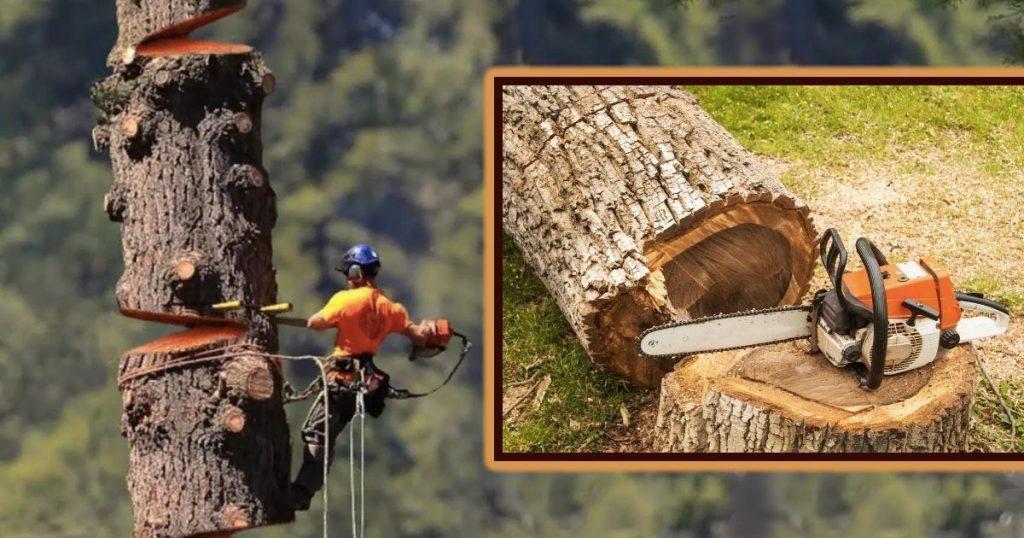Tree removal is a significant undertaking that requires careful consideration of safety measures and effective techniques. Whether faced with a towering tall tree or a massive large tree, the process demands expertise and strategic planning. In this comprehensive article, we will explore seven proven tree removal techniques that will provide you with valuable insights on how to cut down tall trees and large trees in sections. You can ensure a successful and safe outcome by incorporating these techniques into your tree removal process.
Tree removal can pose various challenges, mainly when dealing with tall or large trees. These trees may have extensive root systems, dense canopies, or proximity to structures, making their removal more complex. However, you can navigate these challenges effectively with the proper techniques and tools.
The following sections will delve into various tree removal techniques, discussing their applications, benefits, and considerations. By understanding these approaches, you will be equipped with the knowledge to make informed decisions about the best method for your specific tree removal project.
Here are some of the effective tree removal techniques:
1. Rigging Technique
The rigging technique is commonly used when dealing with tall trees that need to be dismantled section by section. This method involves using ropes, pulleys, and rigging equipment to lower the cut sections to the ground safely. Professional arborists are skilled in setting up rigging systems that allow for the controlled lowering of tree limbs or sections, minimizing the risk of damage to surrounding structures. This technique is beneficial when working in confined spaces where dropping tree sections may not be feasible.
2. Climbing & Disassembling
For moderately tall trees, climbing and disassembling can be an effective technique. This method involves an arborist ascending the tree using specialized climbing gear, reaching the desired height, and systematically cutting down tree sections. By working from top to bottom, the arborist can carefully lower each section to the ground, ensuring minimal impact and maximizing safety. Climbing and disassembling require advanced skills and training, so hiring a professional arborist for this technique is recommended.
3. Crane-Assisted Tree Removal
A crane can be employed when the tree is too large or inaccessible for traditional tree removal methods. Crane-assisted tree removal is a highly efficient technique that utilizes a crane to lift and remove large sections of the tree safely. This method is advantageous when dealing with trees close to structures, as it allows for precise control and minimizes the risk of damage. Working with experienced professionals with the equipment and expertise to operate the crane safely is crucial.
4. Controlled Felling
Controlled felling is commonly used to cut down tall and large trees in open areas. This method involves cutting strategic notches and hinge cuts in the tree trunk to guide its fall in a specific direction. By carefully calculating the angle and direction of the fall, arborists can ensure the tree’s safe removal, avoiding potential hazards or damage to nearby structures. Controlled felling requires a deep understanding of tree biomechanics and should only be attempted by trained individuals.
5. Sectional Tree Removal
Sectional tree removal is an effective technique for handling large trees in confined spaces. Instead of felling the tree in one piece, it systematically involves cutting down a large tree in sections. This method requires the arborist to start from the top and work their way down, removing each section carefully. It is crucial to plan the cuts and utilize ropes or rigging equipment to control the descent of the tree sections. Sectional tree removal is often preferred when working near buildings, power lines, or other obstacles.
6. Tree Removal by Tree-Jack
A tree jack can guide the tree’s fall when dealing with tall trees that lean in a certain direction. A tree jack is a hydraulic device that pushes the tree in the desired direction while being cut. This technique ensures more control over the tree’s fall and minimizes the risk of it falling unpredictably or causing damage to surrounding structures. Tree-jack usage requires careful planning and expertise to ensure safe and successful tree removal.
7. Helicopter-Assisted Tree Removal
In remote or challenging areas where traditional tree removal techniques are impractical, helicopter-assisted tree removal can be employed. This method involves using a helicopter with lifting equipment to remove the tree. The helicopter lifts the cut sections from the ground and transports them to a designated area for processing, ensuring minimal environmental disruption. Helicopter-assisted tree removal is a specialized technique that should only be carried out by trained professionals with experience in aerial operations.
Safely Cut Down Trees Using Tree Removal Techniques!
When it comes to tree removal, safety, and efficiency are paramount. You can ensure a smooth and successful tree removal process by employing the appropriate tree removal technique, whether it’s rigging, climbing and disassembling, crane-assisted removal, controlled felling, sectional removal, tree-jack usage, or helicopter-assisted removal.
Remember, it’s always best to consult professional arborists to assess the tree’s condition, determine the most suitable technique, and remove it safely. With the right approach, you can efficiently know how to cut down tall trees while minimizing risks and protecting surrounding structures.

